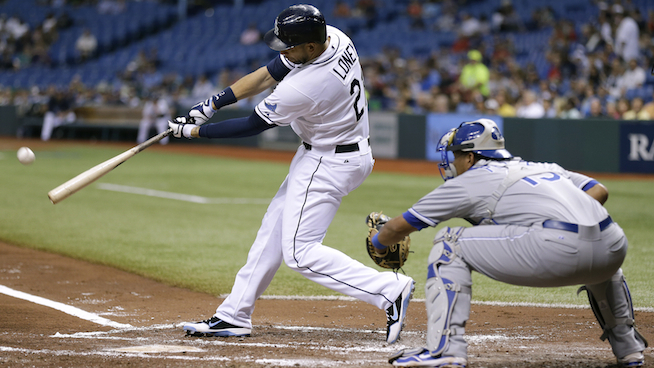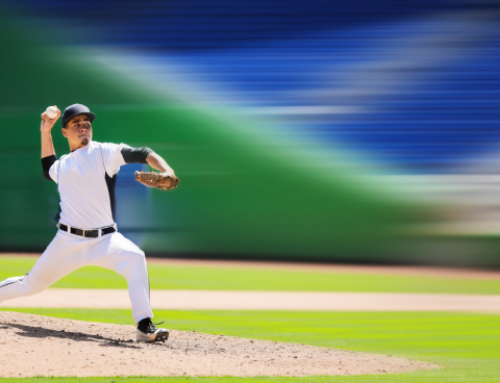Baseball Catcher Technique, Part 1

AP Images
If you want to succeed behind the plate, you need to practice your catcher technique to set up and receive pitches until it becomes second nature. Here are some pointers.
Signals
Relax the mitt off the front of your knee. Make eye contact with the pitcher to be certain he’s engaged with the rubber. If he’s not, but you give the signal anyway, that is a balk. In most situations, you’ll give the signal with your throwing hand and relay it to the pitcher on a number sequence. Place your signal hand directly against your cup. Make sure the pitcher keeps his eyes on the signs until you complete all signals for pitch and location. The pitcher will then give a non-verbal indication that he is ready to start the delivery.
In some situations, a base runner will see and potentially relay your signals to his teammates. Thus, you must mix up the signals so the other team doesn’t know what pitch you’re calling. Many signals are variations of your pitch-calling sequence, including touches to the mask for fastball. A change-up could be a touch to the chest protector. Some catchers paint their fingers or fingernails so the pitcher can see the signals easier during a night game.
Receiving Stance
Your receiving stance should remain constant if you’re going to set the same target for every pitch. Your feet should be slightly wider than shoulder-width apart, with your throwing side foot slightly behind your glove foot. Your hips should be parallel to your knees in a comfortable position. You should be able to move laterally to block a pitch and move to field a bunt or a pop-up hit close to the plate. Place your glove directly in front of your sternum to see the pitcher over the target. Your elbow goes over the top of the knee, and the palm of your glove hand faces the sky so the pitcher can see the mitt as a larger open target.
When you’re setting up in a receiving stance, place your fist behind your knee with your fingers wrapped over your thumb. This will protect your fingers and thumb if the ball comes in contact with your hand. Keep your hand in this position throughout the pitch, even if you need to block the ball. The thumb will pop up the two “power” fingers to grasp the ball so you can throw it back to the pitcher or to a fielder during a stolen-base attempt.
Read More:
RECOMMENDED FOR YOU
MOST POPULAR
Baseball Catcher Technique, Part 1

AP Images
If you want to succeed behind the plate, you need to practice your catcher technique to set up and receive pitches until it becomes second nature. Here are some pointers.
Signals
Relax the mitt off the front of your knee. Make eye contact with the pitcher to be certain he’s engaged with the rubber. If he’s not, but you give the signal anyway, that is a balk. In most situations, you’ll give the signal with your throwing hand and relay it to the pitcher on a number sequence. Place your signal hand directly against your cup. Make sure the pitcher keeps his eyes on the signs until you complete all signals for pitch and location. The pitcher will then give a non-verbal indication that he is ready to start the delivery.
In some situations, a base runner will see and potentially relay your signals to his teammates. Thus, you must mix up the signals so the other team doesn’t know what pitch you’re calling. Many signals are variations of your pitch-calling sequence, including touches to the mask for fastball. A change-up could be a touch to the chest protector. Some catchers paint their fingers or fingernails so the pitcher can see the signals easier during a night game.
Receiving Stance
Your receiving stance should remain constant if you’re going to set the same target for every pitch. Your feet should be slightly wider than shoulder-width apart, with your throwing side foot slightly behind your glove foot. Your hips should be parallel to your knees in a comfortable position. You should be able to move laterally to block a pitch and move to field a bunt or a pop-up hit close to the plate. Place your glove directly in front of your sternum to see the pitcher over the target. Your elbow goes over the top of the knee, and the palm of your glove hand faces the sky so the pitcher can see the mitt as a larger open target.
When you’re setting up in a receiving stance, place your fist behind your knee with your fingers wrapped over your thumb. This will protect your fingers and thumb if the ball comes in contact with your hand. Keep your hand in this position throughout the pitch, even if you need to block the ball. The thumb will pop up the two “power” fingers to grasp the ball so you can throw it back to the pitcher or to a fielder during a stolen-base attempt.
Read More:
[cf]skyword_tracking_tag[/cf]










